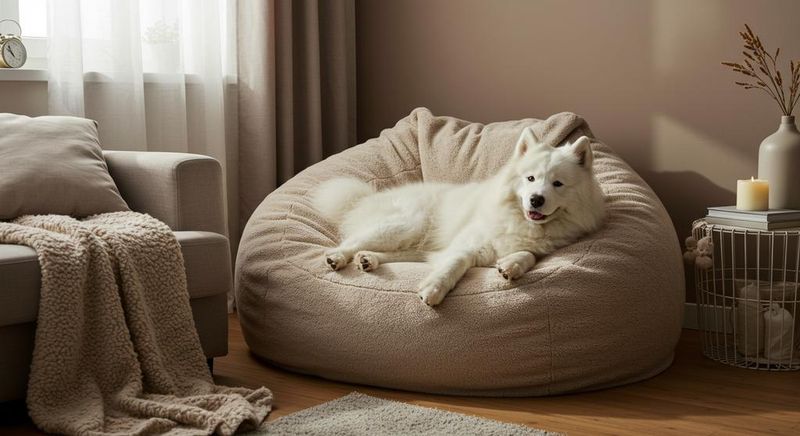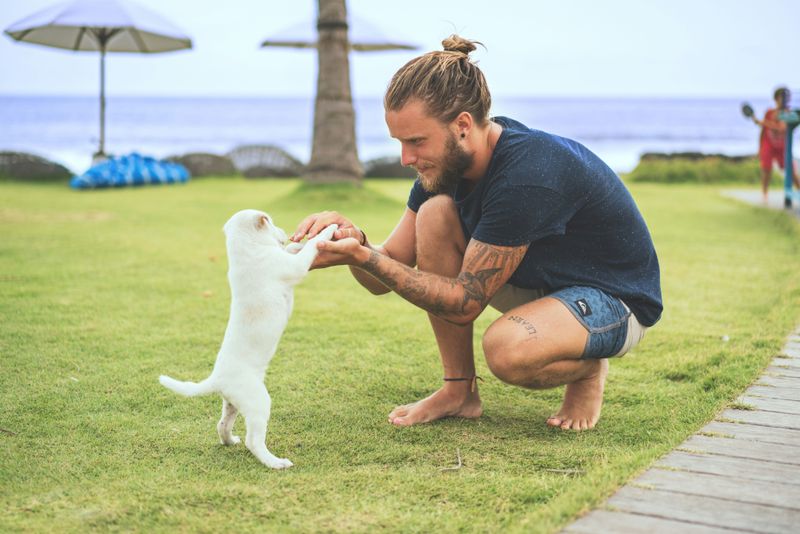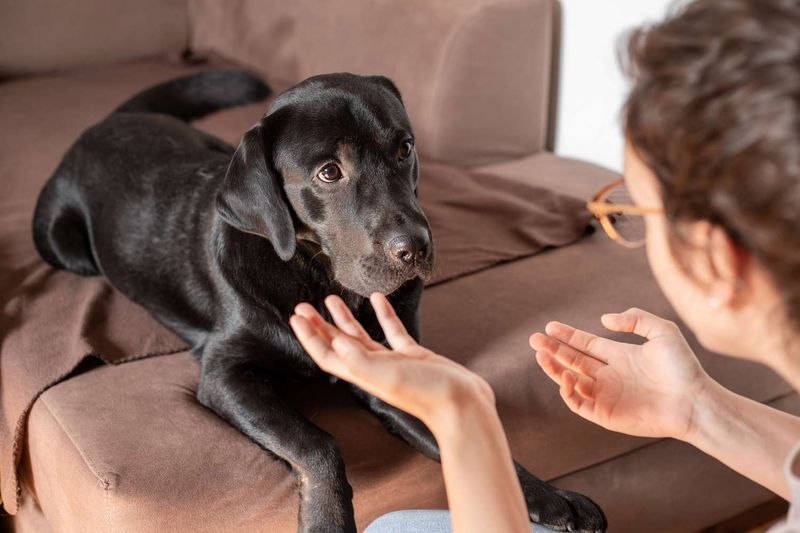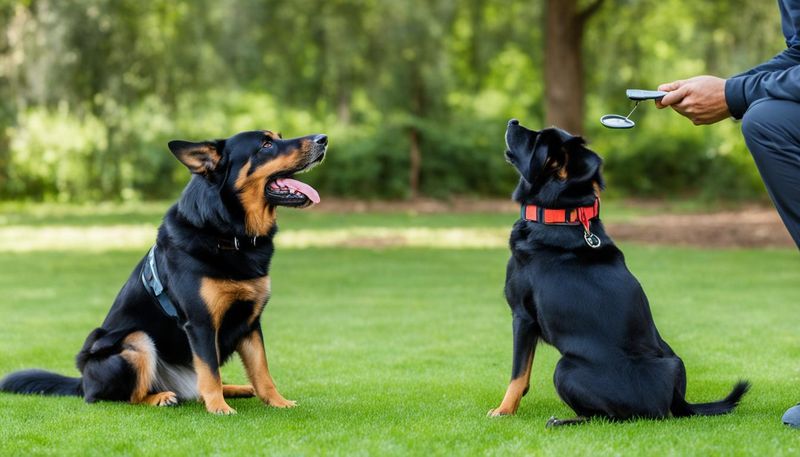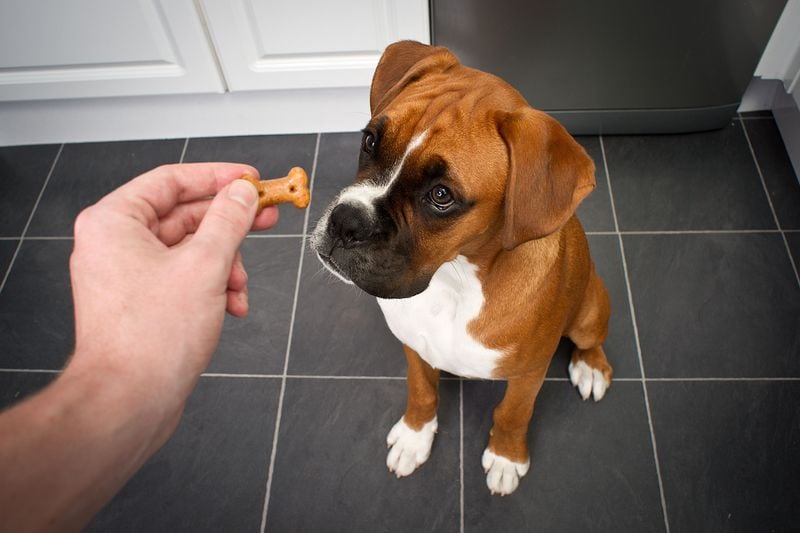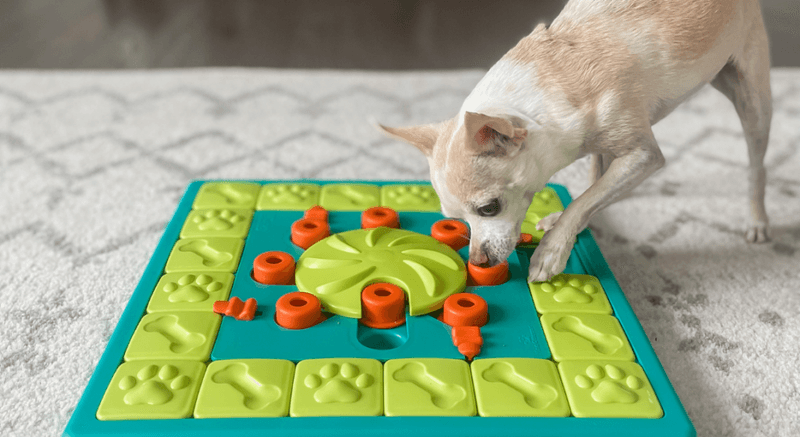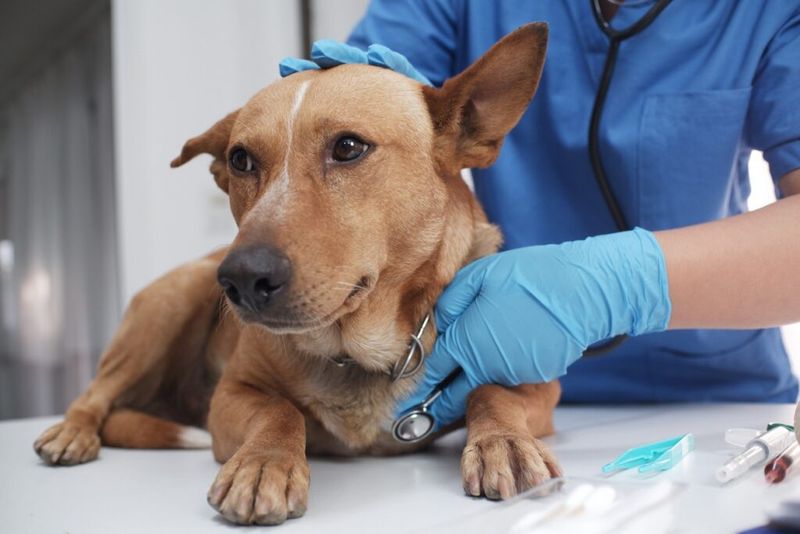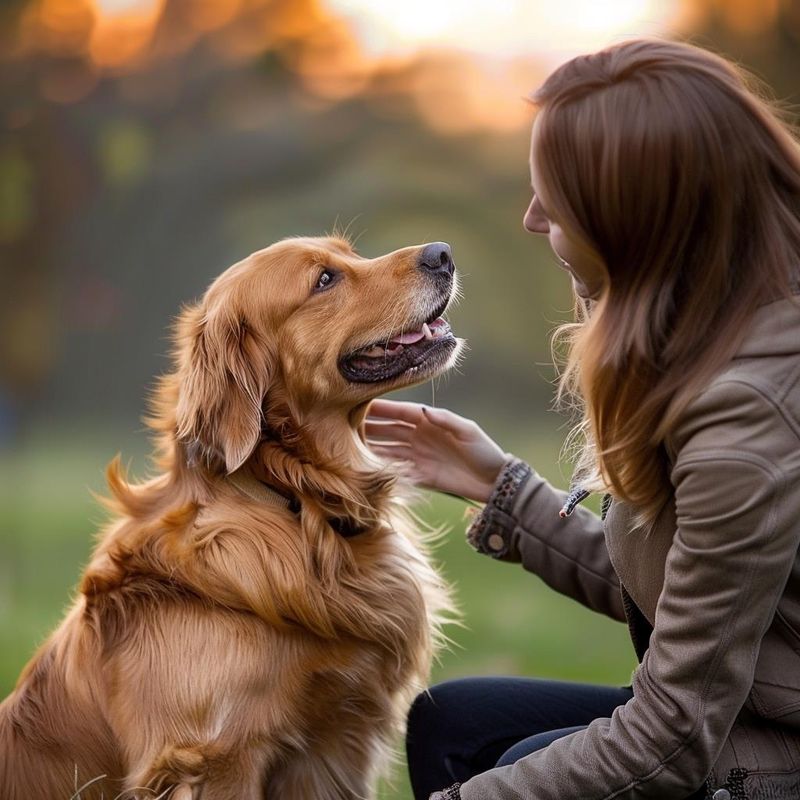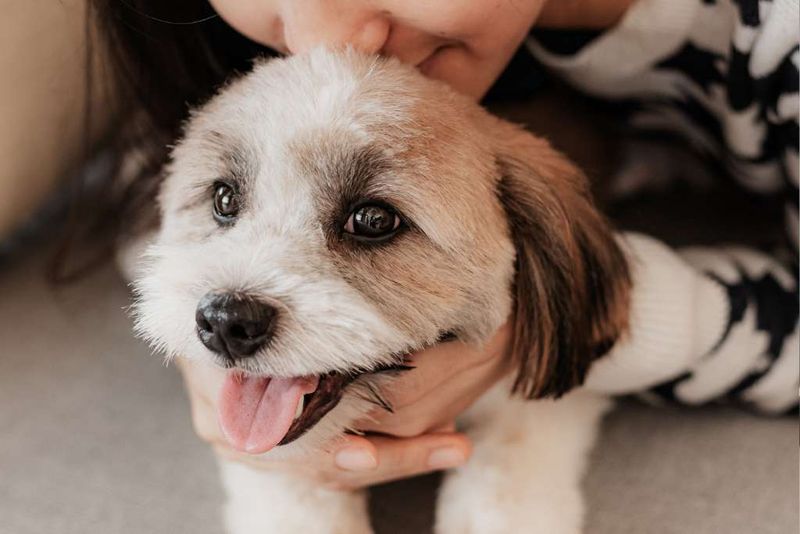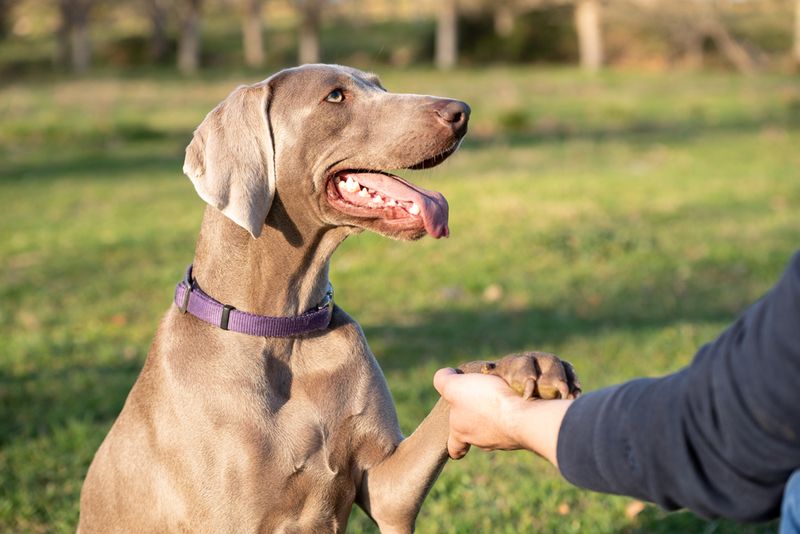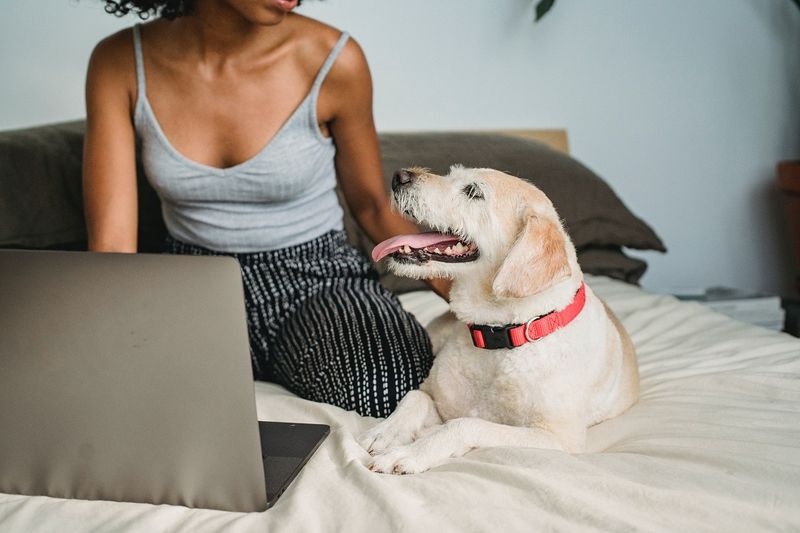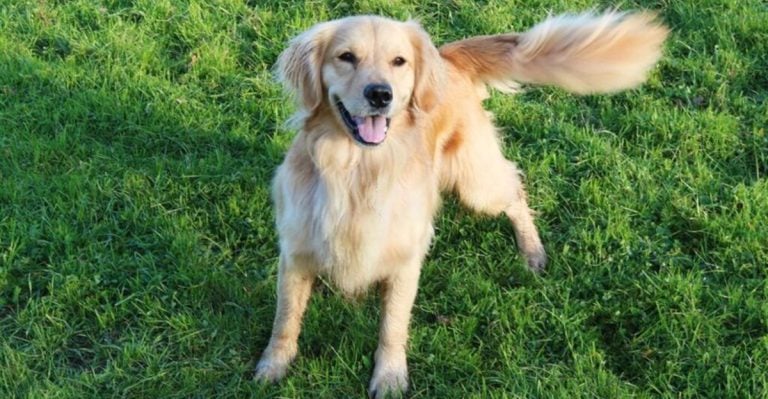11 Things You Should Do If Your Dog Has Been Emotionally Hurt
Dogs feel emotions deeply, just like we do. When your furry friend experiences emotional trauma from abuse, neglect, or scary situations, they need special care to heal.
Their wagging tails may stop, their eyes might lose their sparkle, and their playful spirit can fade away.
Helping your emotionally hurt dog recover requires patience, understanding, and specific approaches that respect their feelings while guiding them back to happiness.
1. Create a Safe Haven
Every wounded soul needs a sanctuary. For your emotionally scarred pup, this means a quiet corner with their favorite bed, toys, and perhaps an item carrying your scent. This retreat becomes their emotional anchor in a world that suddenly feels unpredictable.
Keep this space accessible but protected from household chaos. No one should disturb your dog when they seek refuge here. The consistency of having this personal territory helps rebuild their sense of security and control.
Remember that healing happens on your dog’s timeline, not yours. Some dogs might need this safe space for weeks or even months as they gradually rebuild their confidence.
2. Establish Gentle Daily Routines
Predictability becomes medicine for emotionally wounded dogs. Setting regular times for meals, walks, play, and rest creates a rhythm your dog can count on. When life becomes predictable again, anxiety diminishes.
Morning walks at 7 AM, breakfast at 8 AM, afternoon playtime at 4 PM – these consistent patterns become stepping stones to emotional recovery. Your dog starts anticipating positive experiences instead of fearing negative ones.
Avoid sudden schedule changes during this healing period. If changes must happen, introduce them gradually with plenty of reassurance and positive reinforcement to maintain your dog’s growing sense of security.
3. Speak Softly and Move Slowly
Harsh tones and sudden movements can trigger fear in emotionally fragile dogs. Lower your voice to a gentle, soothing register when speaking to your recovering pet. Slow, deliberate movements become your new normal.
Body language speaks volumes to dogs. Avoid looming over them – instead, crouch down to their level when interacting. This non-threatening posture helps them feel safer in your presence.
Ask visitors to follow these same guidelines. A simple explanation that your dog needs gentle interactions will help everyone create the calm environment necessary for healing. Most people are happy to adjust their behavior once they understand.
4. Follow Your Dog’s Lead
Forcing interaction on an emotionally hurt dog only deepens their wounds. Watch for subtle cues – a turned head, flattened ears, or whale eye (showing the whites) signals discomfort. Respect these boundaries immediately by backing away.
Healing happens in baby steps. Your dog might only tolerate brief contact initially before retreating to their safe space. Celebrate these small moments of trust rather than pushing for more.
Keep a journal of your dog’s comfort zones and triggers. This record helps track progress and identify patterns that might not be immediately obvious. Over time, you’ll notice their comfort zone gradually expanding.
5. Reward Brave Moments Generously
Positive reinforcement works wonders for rebuilding confidence. When your dog ventures out of their comfort zone – approaching a new person or exploring a once-scary area – celebrate with their favorite treats, gentle praise, or a special toy.
Timing matters tremendously. Rewards must come immediately after the brave behavior so your dog makes the connection. A delayed treat loses its power as positive reinforcement.
High-value rewards make the biggest impact. Reserve special treats like small pieces of chicken or cheese exclusively for these breakthrough moments. Your dog will begin associating these formerly frightening situations with delicious outcomes instead of fear.
6. Introduce Gentle Mental Stimulation
Puzzle toys and simple training games provide more than entertainment – they rebuild confidence and redirect focus away from emotional wounds. Start with easy wins like treat-dispensing balls or snuffle mats that reward minimal effort.
Mental engagement activates different brain pathways than those associated with fear and trauma. A dog focused on finding hidden treats in a puzzle toy experiences moments of joy that gradually begin to outweigh their anxiety.
Keep sessions short and successful at first. Five minutes of achievement beats fifteen minutes of frustration. As your dog’s confidence grows, gradually increase the challenge level of games and puzzles to match their developing skills.
7. Seek Professional Medical Support
Veterinarians play a crucial role in emotional recovery. Physical health issues often masquerade as behavioral problems or compound emotional trauma. A thorough checkup rules out pain or illness that might be hindering your dog’s progress.
Some dogs benefit from short-term anti-anxiety medications that create a window of opportunity for behavioral healing. These aren’t permanent solutions but can help severely traumatized dogs become receptive to rehabilitation techniques.
Find a vet experienced with behavioral issues. Their specialized knowledge helps identify subtle signs you might miss and provides a comprehensive recovery roadmap tailored to your dog’s specific needs.
8. Partner with a Behavior Specialist
Professional dog behaviorists bring specialized knowledge to complex emotional recovery cases. They assess your dog’s specific trauma responses and create tailored rehabilitation plans that address the root causes rather than just symptoms.
Look for certifications like CAAB (Certified Applied Animal Behaviorist) or CDBC (Certified Dog Behavior Consultant) when choosing a specialist. These credentials ensure science-based methods rather than outdated techniques that could worsen trauma.
Many behaviorists offer virtual consultations if in-person sessions would stress your dog further. This approach allows expert guidance while keeping your pet in their safe, familiar environment during the vulnerable early stages of recovery.
9. Provide Reassurance Without Coddling
Finding the balance between support and overprotection challenges many owners of traumatized dogs. Constant coddling accidentally rewards fearful behavior, while ignoring distress leaves emotional wounds unaddressed. The middle path works best.
When your dog shows fear, acknowledge it calmly without dramatic reactions. A steady, matter-of-fact “You’re okay” in a neutral tone communicates safety better than anxious baby talk or frustrated dismissal.
Guide your dog through scary moments rather than carrying them through. For example, walk confidently past the neighbor’s noisy lawnmower instead of picking your dog up. Your calm presence teaches them they can handle challenges.
10. Reintroduce Social Connections Carefully
Dogs need healthy social relationships to fully heal, but rushing this process backfires. Start with one calm, dog-savvy friend who understands trauma recovery. Brief, positive interactions build the foundation for wider socialization later.
Choose meeting locations thoughtfully. A neutral, quiet park offers more control than a busy dog park where overwhelming stimuli might trigger setbacks. Early morning or evening visits mean fewer people and dogs to navigate.
Watch for subtle stress signals – excessive panting, lip licking, or stiff body posture indicate your dog needs a break. Ending interactions while they’re still positive creates good associations for next time rather than pushing until fear takes over.
11. Acknowledge Progress with Joyful Recognition
Healing from emotional trauma happens in tiny increments that deserve celebration. The first tail wag in days, approaching a once-feared object, or sleeping peacefully through the night represent massive victories in your dog’s journey.
Keep a recovery journal documenting these breakthroughs, both for your encouragement and to track patterns in healing. Photos and videos provide visual evidence of progress that might otherwise go unnoticed in day-to-day care.
Share these victories with your support network. Veterinarians, behaviorists, and understanding friends provide valuable perspective and reinforcement when the path seems long. Their recognition of your dog’s courage and your dedication fuels continued healing efforts.

